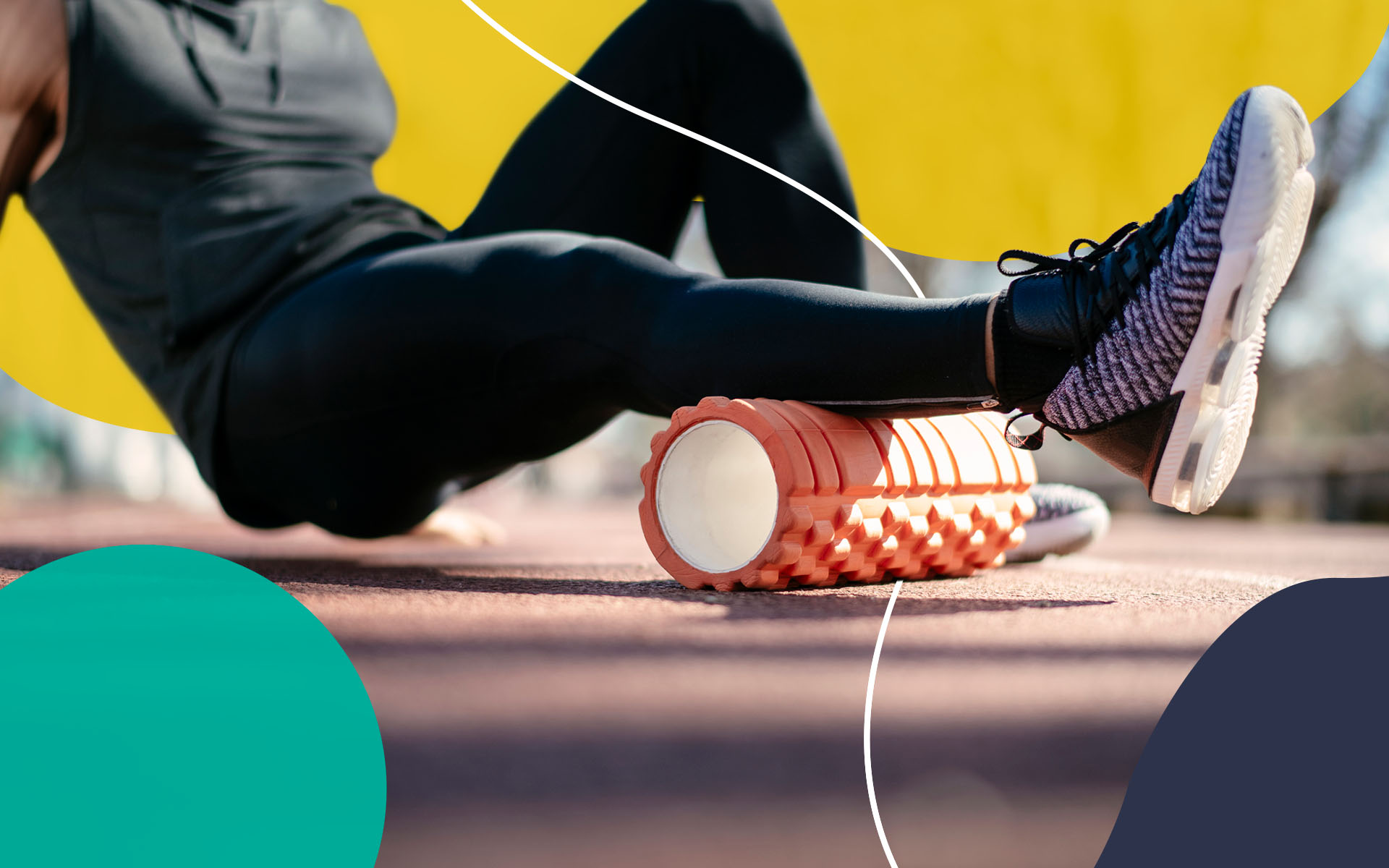
Body + Mind is reader-supported. We may earn an affiliate commission when you buy through some of the links on our site.
After a tough exercise, you probably feel a little tight and achy. Maybe you stretch out your arms and legs before you move on to your next task, but even the next day, you notice a soreness. As your muscles repair in between workouts, it’s essential to treat them right.
Here are five ways to relieve pain through foam roll stretches. You’ll need a slightly dense foam roller to complete these routines.
This move can loosen up your calves after a particularly hard leg-based exercise. If you don’t take the time to roll out your calves, you may apply too much pressure to other areas of your body. This pressure then affects your knees and ankles.
Grab the foam roller and sit on the ground. Lift your legs so that they’re positioned straight out with the foam roller under them. The foam roller should rest beneath your calves. Then, place your right leg over your left leg. Use your hands to help push your body over the stationary foam roller.
Continue for 30 seconds before you switch legs.
A tight upper back can occur due to an intense workout. It can also happen because of poor posture. In any case, physical therapy helps loosen that muscle strain so that you can prevent further issues.
Lie down on the floor with your knees bent. Place the foam roller underneath your upper back. Be sure to cross your arms in front of you so that you can stretch out your shoulder blades. Lift your hips. Focus your weight on the foam roller.
Feel free to shift your weight to either side of your back as you roll.
If you sit at work all day, your quads can feel slightly sore. Of course, they can also become painful after you complete a workout or go for a run. It’s essential to keep these muscles engaged.
Get into a plank position on the floor. Put the foam roller under your thighs. Start at the top of your legs and move your body forward and backward. The foam roller should work its way down to your kneecaps. You can also focus on each leg at a time.
Your iliotibial band, or IT band, sits on your outer thigh and may feel sore after a run. Other exercises can aggravate this muscle as well, so it’s necessary to work it out.
Lie down on your side on the floor. Insert the foam roller under the thigh that’s closest to the ground. Use your forearm to balance your body. Then, slowly work out the muscle. You can bend your other leg and place your foot on the ground for more support.
If you feel any tenderness as you roll, make sure to take a breather and stop for a moment before you continue.
You use your hamstrings for many daily activities, like walking. This area in your leg consists of several tendons, so it’s essential to make sure that they’re not overly tight.
Sit down with your legs extended outward. The foam roller should rest under your thigh. Plant your hands firmly on either side of your body. Then, lift your hips off the ground. Push yourself back and forth so that the foam roller works its way up and down your thigh.
It’s always crucial to keep your muscles in check as you commit to a fitness routine. Use these foam roll stretches when needed so that your body can heal more quickly.
Your email address will only be used to send you our newsletter, and at any time you may unsubscribe. For more information, see our Privacy Policy.